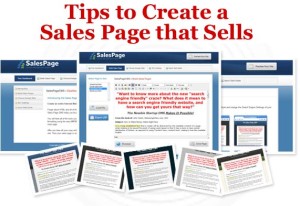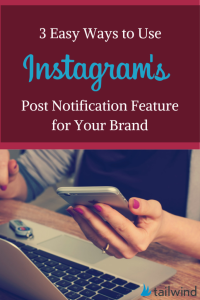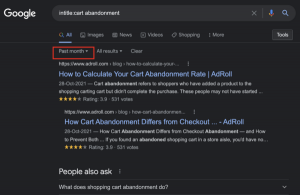
Sales pages take many different forms, but share the same basic structure:
1. Headline
2. Sub Headline
3. Presentation of the problem
4. Introduction of your product as the solution
5. Social Proof
6. Bonuses
7. Offer
8. Guarantee
9. Call to Action
10. P.S.
Creating Killer Headlines
Your headline is the first opportunity gaining your customer’s interest by making an emotional appeal to whatever problem they are trying to solve.
Headlines should be clear and easy to understand, should include your keywords, and need to attract the reader to keep reading further.
Presentation of the Problem
Right after the headline and sub headline, you want to present the problem that the customer is having, focusing especially on the customer’s pain.
For example, if your niche is dating and relationships, you could present the problem like this:
“Are you tired of striking out when it comes to the opposite sex? Do you get a tight feeling in your stomach whenever you see a happy couple because it makes you wonder if you will ever find the right mate?”
Introduction of Your Product as the Solution
On your sales page, your product should always be the best – or better yet, the only – solution to whatever problem you have just stated.
It’s critical that you portray your product as not just one of many possible solutions, but as the only solution that will give your customers the exact type of relief from whatever pain they are experiencing.
Social Proof
Social proof, also known as the “bandwagon approach,” is when you show your prospects how other people have benefited from your product.
Social proof often takes the form of product reviews or testimonials. You also can include stories about people who have experienced profound improvements to their lives as a result of your product. This is an excellent way to build trust and marketing proof to your new or existing customers, and social proof’s, by video, should be in your sales funnel to drive up the conversion ratio.
Bonuses
Bonuses are not always essential, but they can often help “sweeten the pot” and help customers make the decision to buy decision if they are on the fence. Usually, they are one or two additional products that are related to your primary product’s niche you throw in for free.
You can include anywhere from one to three bonuses. More than three can make it too confusing for the customer.
Make sure you assign a value to the bonus: “The WordPress dictionary ordinarily sells for $ 19 and the keyword software is worth $ 29, but they are yours for free if you purchase the main product now!” This lets you increase the perceived value of your offer. The key here is offering ‘Value” and giving “Value” away.
Guarantee
You almost always want to offer a guarantee. For one, it’s just good business. If you aren’t backing up your products with a money-back guarantee, some people might wonder if there is something wrong with your products. Second, guarantees are so common that it will seem strange if you don’t offer one.
You want to limit your guarantee to 30- or 60-days from the day of sale so you don’t have customers coming back months or even years later looking for a refund. It’ a good idea to always provide refunds quickly if a customer requests it.
With digital products, you generally want to let them keep the product rather than send it back because it builds goodwill and makes them more likely to purchase more products from you in the future.
Offering a guarantee also removes risk for the customer: If they don’t like it, they can have their money back. Some people will buy your products and ask for refunds just so they can get the product for free, but not many, so it’s worth it to provide a guarantee every time.
Call to Action
Your Call to Action (CTA) is the most important part of your landing page. Your CTA is where you tell your customers exactly what it is you want them to do: Buy this product, subscribe to this website, and so on.
It is critical that your CTA is clear and to the point. There can be no ambiguity about what it is you want your customer to do. Even if you are a little forceful, that’s okay. Don’t suggest, tell.
By the time readers have made it all the way through your sales letter to the CTA, they probably are ready to buy anyway. Your job with the CTA is to push them into taking action.
P.S.
The P.S. can be an effective last-minute way to close the sale. The P.S. stands for “post-script” and it can be used either to restate the central points of the sales letter or introduce something new, like adding scarcity or another bonus.
More than one P.S. is okay if you want, but they probably should be capped at three otherwise there’s a higher chance your customer will stop reading. In your P.S., remind the reader of the deal or special offer and add urgency.
I hope you enjoy what you learned and hope you apply to your marketing to get results!
(258)
Report Post





